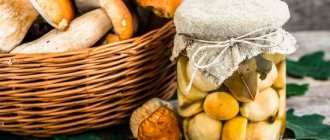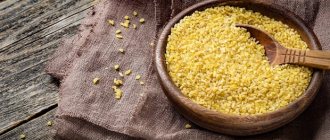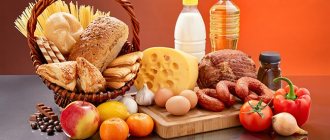How long does it take for mushrooms to be digested in the human stomach?
Having chronic gastritis in your arsenal, you can only pick mushrooms, unfortunately. Let's look at the background of this statement.
Let's talk about the benefits
The conversation will only focus on edible representatives of forest delicacies. Nutritionists know that for some diseases, the consumption of mushrooms is not only not prohibited, but is also recommended. We present the beneficial properties of the most popular and well-known forest representatives of the mushroom world.
Extraordinarily beautiful mushrooms. Moreover, the beneficial advantages of the product prevail over their harmful qualities.
Chanterelles have anthelmintic and antibacterial properties; it is not for nothing that they are popularly called an antibiotic fungus. Thanks to a special component, quinomannose, chanterelles are fatal to all types of parasites and their larvae.
That is why there are simply no worm-eaten chanterelles in nature. The mushroom contains about 20 types of amino acids necessary for the body, it also contains microelements (zinc and copper, manganese, selenium) and vitamins - A, PP, D2, B1, B2. Another important advantage of chanterelles is that they do not accumulate radionuclides, but remove them from the body. The calorie content of 100 grams of chanterelles is only 19 kcal.
Kings among their own kind, the most popular and delicious mushrooms. Boletus mushrooms are primarily beneficial for heart patients due to their high content of nicotinic acid (vitamin PP) and potassium, which have a beneficial effect on the blood supply to the heart muscle. 22 amino acids, phosphorus, copper, vitamins C, B, A make boletus a healthy food. Calorie content – 34 Kcal per 100 grams.
Like all other forest brethren, boletus contains a huge amount of protein. Vitamins A and E, C and group B provide valuable antioxidant properties.
There are also enough microelements in boletus - they include iron, manganese, potassium, and zinc. The calorie content is low - only 22 Kcal per 100 grams of product.
Boletus is recommended for iron deficiency anemia, reduced immunity, and infectious diseases.
The calorie content of butter is the same as that of chanterelles - 19 Kcal per 100 grams. Amino acids, vitamins, and microelements are contained in boletus in smaller quantities than in boletus and boletus, but they contain more lecithin, a substance that can prevent the formation of cholesterol plaques.
There is no need to go into the forest for oyster mushrooms and champignons. They can be purchased at the supermarket. It is much easier to prepare dishes from oyster mushrooms and champignons than from wild mushrooms.
Of course, the aroma is inferior to the forest one, but still. Champignons strengthen the heart muscle, reduce cholesterol levels, and remove radionuclides from the body.
Oyster mushrooms are also grown artificially - so there is no need to be afraid that with mushrooms you will get a fair share of carcinogens. Amino acids and proteins, vitamins and microelements are invariably present in oyster mushrooms, helping to cope with diseases of the heart and blood vessels. Oyster mushrooms normalize metabolism, fight parasites, enhance lactation, and relieve skin problems.
All these properties of mushrooms are attractive, why are they not allowed to be used for gastritis? Let's figure it out.
How long does it take to digest in the stomach?
Interesting! Scientists compare the protein of mushrooms (chitin) with proteins found in the shells of beetles. The human body spends 4 to 6 hours digesting mushroom dishes.
If you really want to, then you can’t!
If you have gastritis, you should not eat mushrooms. Under no circumstances. And nothing can replace them either - there is no alternative. The exception is chronic gastritis in the stage of stable remission.
In this case, a person can afford mushroom broth without mushrooms once or twice a year. It is important that the mushrooms themselves do not get into the stomach.
Let's consider using white béchamel sauce prepared with mushroom broth. Of course, to prepare the broth it is better to use champignons or oyster mushrooms.
Important! Before consuming mushroom broth or sauce, you must take an enzyme preparation - Mezim, Festal, which will help a sore stomach cope with heavy food.
With increased acidity
With hyperacid gastritis, which is what the disease with high acidity of gastric juice is called, food should be of a soft consistency, at room temperature. Smoked meats, spices, fried foods, and bone broths are prohibited. You will have to say goodbye to coffee and strong tea, as well as alcoholic drinks and smoking.
Tea and milk - not forest, but medicinal?
Let's talk about other mushrooms that have nothing to do with the forest. Let's figure out whether it is possible to drink the widely advertised tea and milk mushrooms for gastritis.
Source: https://moy-zheludok.ru/voprosy/skolko-perevarivayutsya-griby-v-zheludke-cheloveka
With increased acidity
With gastritis with high secretion of hydrochloric acid, food must be treated with particular care - so that the gastric mucosa does not suffer, a gentle diet of easily digestible foods is recommended. This does not include mushrooms, including mushroom broths. The frequency of meals is also important - a person should not allow the stomach to be empty, because in the absence of “material for digestion”, a high content of HCL will irritate the mucous membrane. Among patients, there was even an expression - “the stomach eats itself” , which describes this situation.
With hyperacid gastritis, which is what the disease with high acidity of gastric juice is called, food should be of a soft consistency, at room temperature. Smoked meats, spices, fried foods, and bone broths are prohibited. You will have to say goodbye to coffee and strong tea, as well as alcoholic drinks and smoking.
Why is it not recommended to eat mushrooms for gastritis of the stomach and is it possible to replace them with something?
Everyone knows that eating mushrooms for gastritis is not recommended. But in the fall, during the “silent hunting” season, it’s so difficult to resist going into the forest, and then resist the enchanting aromas wafting from the kitchen!
Having chronic gastritis in your arsenal, you can only pick mushrooms, unfortunately. Let's look at the background of this statement.
Chanterelles
Extraordinarily beautiful mushrooms. Moreover, the beneficial advantages of the product prevail over their harmful qualities.
Chanterelles have anthelmintic and antibacterial properties; it is not for nothing that they are popularly called an antibiotic mushroom . Thanks to a special component, quinomannose, chanterelles are fatal to all types of parasites and their larvae.
That is why there are simply no worm-eaten chanterelles in nature. The mushroom contains about 20 types of amino acids necessary for the body, it also contains microelements (zinc and copper, manganese, selenium) and vitamins - A, PP, D2, B1, B2 . Another important advantage of chanterelles is that they do not accumulate radionuclides, but remove them from the body. The calorie content of 100 grams of chanterelles is only 19 kcal.
White
Kings among their own kind, the most popular and delicious mushrooms. Boletus mushrooms are primarily beneficial for heart patients due to their high content of nicotinic acid (vitamin PP) and potassium, which have a beneficial effect on the blood supply to the heart muscle. 22 amino acids, phosphorus, copper, vitamins C, B, A make boletus a healthy food. Calorie content – 34 Kcal per 100 grams.
Boletus
Like all other forest brethren, boletus contains a huge amount of protein. Vitamins A and E, C and group B provide valuable antioxidant properties.
There are also enough microelements in boletus - they include iron, manganese, potassium, and zinc. The calorie content is low - only 22 Kcal per 100 grams of product.
Boletus is recommended for iron deficiency anemia, reduced immunity, and infectious diseases.
Butter
The calorie content of butter is the same as that of chanterelles - 19 Kcal per 100 grams. Amino acids, vitamins, and microelements are contained in boletus in smaller quantities than in boletus and boletus, but they contain more lecithin, a substance that can prevent the formation of cholesterol plaques.
From the store shelf: champignons and oyster mushrooms
There is no need to go into the forest for oyster mushrooms and champignons. They can be purchased at the supermarket. It is much easier to prepare dishes from oyster mushrooms and champignons than from wild mushrooms.
Of course, the aroma is inferior to the forest one, but still. Champignons strengthen the heart muscle, reduce cholesterol levels, and remove radionuclides from the body.
Oyster mushrooms are also grown artificially - so there is no need to be afraid that with mushrooms you will get a fair share of carcinogens.
Amino acids and proteins, vitamins and microelements are invariably present in oyster mushrooms, helping to cope with diseases of the heart and blood vessels. Oyster mushrooms normalize metabolism, fight parasites, enhance lactation, and relieve skin problems.
All these properties of mushrooms are attractive, why are they not allowed to be used for gastritis? Let's figure it out.
If you can't resist and your stomach hurts
It is difficult to follow a therapeutic diet until its violation provokes a painful attack. The feeling is not pleasant and requires medical attention and the correct actions of the patient.
However, such an attack is a motivation for following the nutritional rules for gastritis. After the pain is relieved, a person no longer has the desire to eat heavy food.
So, if you couldn’t resist eating mushrooms and are experiencing stomach pain, you need to:
- First of all, consult a doctor. Even if you are absolutely sure that the mushrooms were of high quality and cooked correctly, it is not worth the risk. It is not always possible to cope with exacerbation of the pain syndrome at home, and the patient is hospitalized.
- Rinse the stomach.
- To relieve pain and heartburn, you can take an antacid - Almagel, Hefal. The doctor will prescribe further drug treatment.
- Drink more warm non-carbonated liquid - green tea, water.
- Follow a strict diet - eat little and often. Use only approved products.
Watch a video about the benefits of mushrooms from a nutrition expert:
They dealt with mushrooms for gastritis and put a ban on them. But don’t assume that your illness is impoverishing your diet. If desired, even dietary products can be prepared in a tasty and varied way. Use a double boiler, bake, simmer, simmer. Be creative when cooking and learn new recipes.
Take your family as your allies - gradually healthy eating will become a habit. You will forget about exacerbations of gastritis and solve many additional problems - get rid of excess weight, high blood pressure, depression and fatigue. You can live without mushrooms, but if you have gastritis, it is necessary.
Source: https://MedBrat.online/zheludok/gastrit/pitanie/griby.html
How long do various foods take to digest (Now it’s clear what’s best to eat before bed)
Today there is a lot of talk about proper and balanced nutrition. Unfortunately, it is not always possible to follow a specially selected diet and daily routine. Either a hard day at work, or a dream trip to a tropical island, or... an unbearable desire to eat something literally before bed.
We at Bright Side studied which foods spend how long in the stomach. And based on this, we selected those dishes that would be most suitable for different life situations.
© Unsplash, © Depositphotos
There are situations when a difficult working day lies ahead and there is no time even for a coffee break.
Then you need to take care of your menu for the day in advance so that the feeling of hunger does not add even more problems.
You can have breakfast with porridge in milk with something sweet, for example, adding honey to it or eating chocolate as a bite. For lovers of more “serious” food, scrambled eggs or an omelet in butter with cheese are suitable.
Food digestion time:
- cereal - 60–80 min.
- milk - 120 min.
- honey - 60–90 min.
- chocolate - 120 min.
- scrambled eggs, omelet - 120–180 min.
- homemade cheese - 90 min.
- hard cheese - 240–300 min.
© Depositphotos, © Depositphotos
Any trip anywhere involves all sorts of surprises related to transport and schedules. And if you are preparing to go outdoors, then there may be even more surprises. That's why it's better to eat a hearty meal beforehand so you can enjoy your trip rather than worrying about food as soon as you step out the door. Dumplings and potatoes fried with mushrooms are suitable for this.
Food digestion time:
- dumplings - 180–210 min.
- fried potatoes - 180–240 min.
- mushrooms - 300–360 min.
© Depositphotos, © Depositphotos
Probably, each of us has had this experience: we stayed up late and it seemed like it was time to go to bed, but suddenly we really wanted to eat something... And although almost all nutritionists advise to refrain from temptation, sometimes you can still treat yourself. But wisely. Good foods are those that leave your stomach quickly, perhaps even before you get into bed.
Food digestion time:
- broth - 20–40 min.
- tomato - 30–40 min.
- cucumber - 30–40 min.
- kiwi - 20–30 min.
- piece of lean fish (for example cod) - 30 min.
© Depositphotos, © Depositphotos
We have already looked at what to eat for breakfast when you have a hard day ahead or before a trip to nature. But in such situations it is almost impossible to do without snacks. What can you take with you in reserve so that you can eat on the go and hold out until a normal dinner?
Food digestion time:
- halva - 180 min.
- nuts −180 min.
- dried fruits - 120 min.
- yogurt - 120 min.
- bun - 150–210 min.
© Depositphotos, © Depositphotos
You planned to go to the gym or go for a run in an hour, but suddenly you suddenly want to eat. You can, of course, overpower yourself and wait until the end of the workout. However, not everyone and we do not always have iron willpower. Therefore, just in case, you need to keep in mind what you can snack on in order to avoid problems during training or not cancel it altogether.
Food digestion time:
- vegetable and fruit juices - 15–30 min.
- apple - 40 min.
- banana - 45–50 min.
© Depositphotos, © Depositphotos
When it's hot, you usually don't want to eat much. But if you had active physical activity or your brain was solving some problems all day without stopping, then the body will require to replace the calories spent. Here is a list of foods that will temporarily satisfy your hunger without putting too much strain on your stomach.
Food digestion time:
- fatty fish (trout, salmon, herring) - 50–80 min.
- boiled egg - 120–150 min.
- chicken meat - 90–120 min.
- feta cheese - 90 min.
- low-fat cottage cheese - 90 min.
- ice cream - 120–150 min.
When it’s cold outside or indoors, the body is forced to produce additional heat so that you don’t freeze. This takes a lot of energy, which means you will also get hungry faster. In this case, high-calorie and long-digesting foods would be an excellent solution. For example, fish or meat soup, as well as fried meat.
- lard - 300–360 min.
- pork - 210–300 min.
© Depositphotos, © Depositphotos
Many of us have this habit. Whether we are watching a movie, reading a book or working at the computer, we often want to chew something at the same time (and not always chewing gum). The most “harmless” ones in this case will be fruits and vegetables. But it’s still better to fight the habit.
As for chewing gum, it is better to use it as little as possible. “Empty” chewing harms us because it deceives the body, which begins to prepare for food intake and produce digestive juice. Not to mention other problems associated with the oral cavity and teeth.
- carrots - 50–60 min.
- boiled beets - 45–55 min.
- boiled corn - 40–50 min.
- grapes - 30 min.
- peach - 40 min.
- pineapple - 40–60 min.
- Chewing gum, by the way, is not digested and leaves the body after 12–36 hours.
To create the right diet and choose your menu, you need to know not only the digestion time of certain foods, but also some rules.
- Ideally, you should try to select for a specific meal those foods that remain in the stomach for approximately the same amount of time. This way you won't put any additional stress on it.
- If you add oil to salads (even vegetable and even vegetable ones), this will increase the digestion time of food by 2-3 times. Products develop a shell that needs more time to dissolve.
- Chewing your food thoroughly will not only speed up the digestion process, but also make it easier. Enzyme treatment will begin in the mouth.
- Food is best eaten warm rather than cold. This is how microelements begin to disintegrate even before they enter the body. This means, firstly, the stomach will need less strength to process it. And secondly, more nutrients will be absorbed and will not end up in an incompletely broken down form in the intestines, which can cause discomfort.
- But the popular question of whether you can drink while eating remains open. Some experts claim that liquid can dilute gastric juice and complicate the digestion process. Others believe that water and tea will quickly leave the stomach without causing any problems.
Preview photo Depositphotos, Depositphotos
Source: https://www.adme.ru/zhizn-nauka/skolko-perevarivayutsya-razlichnye-produkty-i-chto-imenno-sest-chtoby-dolgo-ne-progolodatsya-1915015/
How long does it take to digest food?
A balanced diet is the most reasonable type of nutrition today.
By the term “digestion,” medicine refers to the time that food spends in our stomach. This time is enough to digest proteins and fats, since their breakdown time is equal to the time of digestion in the stomach. With carbohydrates, things are more complicated. Here two concepts are required: “digestion”, “assimilation”. But they form the basis of the diet for a raw food diet, so clarity on this issue is important. It is when a person decides to switch to a raw food diet that the question arises, what is the rate of absorption of foods. Unfortunately, little attention is paid to this issue, despite the fact that it is fundamental in such a food system. Separate intake does not simply mean sequential consumption of food, which is separated in time, but the intake of one class of food after digestion (assimilation) of another. It is worth saying that the time and speed of absorption of different products can vary significantly.
Let's talk now about digestion and assimilation of food.
Food is vital for our body; it receives from it the substances necessary for life: nutritional and biologically valuable. But in order to get them, you must first digest the food, first breaking it down into chemical components, and then assimilate it.
The digestion process takes a long time, it begins with enzymatic and mechanical processing of food in the oral cavity and ends in the last sections of the intestine. Such a journey of food in the body in time looks approximately as follows: food is digested in the stomach from 30 minutes to 6 hours, continues to travel further in the small intestine for up to 7-8 hours, continuing to be broken down and absorbed along the way, and only then everything that has not had time to be digested , enters the large intestine and can remain there for up to 20 hours.
Now let's move on to the time of digestion and assimilation of foods.
This time is also commonly called the rate of digestion (assimilation) of products. But in fact, at this time, food is processed only in the stomach. So. Vegetables:
- Tomatoes, cucumbers, lettuce, peppers, herbs - 30-40 minutes (vegetables seasoned with oil - up to 1.5 hours).
- Zucchini, green beans, cauliflower, broccoli, corn - boiled, digested for 40 minutes, seasoned with oil - 50.
- Parsnips, beets, carrots, turnips will be digested within 50-60 minutes.
- Potatoes, sweet potatoes, Jerusalem artichokes, chestnuts, pumpkin, yams - in 60 minutes.
Berries and fruits:
- Berries and watermelon are digested in 20 minutes.
- Melon, grapes, citrus fruits and other juicy fruits - 30 minutes.
- Apples, pears, cherries, peaches, apricots and other fruits are digested for 40 minutes.
- Fruit, fruit and vegetable salads - 30 - 50 minutes.
Liquids:
- Water is absorbed almost instantly if there is no other food in the stomach. In this case, it immediately enters the intestines.
- Fruit and vegetable juices are digested within 10-30 minutes.
- Broths of varying strengths - 20-40 minutes.
- Milk - up to 2 hours.
Cereals, cereals, legumes:
- Buckwheat, polished rice, millet are digested in 60-80 minutes.
- Barley, oatmeal, corn flour - 1-1.5 hours.
- Peas, chickpeas, lentils, beans (red, white, black) - in 1.5 hours.
- Soy - 2 hours.
Nuts and seeds:
- Sunflower, pumpkin, sesame, and melon pear seeds are digested on average in about 120 minutes.
- Hazelnuts, peanuts, pecans, almonds, walnuts - digest in 150 - 180 minutes.
Why eat mushrooms, because they are not digested: 4 myths about their usefulness with facts
Yes, mushrooms really are not digestible by the human body - this sad, homespun truth suddenly came to our minds.
But why are they so tasty and why do we eat them?
Mushrooms have long been considered an extremely healthy product that our ancestors ate, so few people think about their true benefits for the body.
Are mushrooms as healthy as we used to think? Why eat them at all? What myths are shrouded in these delicious creations of the forest?
Read about it in this article!
Myths and analysis of real benefits
Right off the bat, mushrooms are really poorly absorbed by the body. This does not make them absolutely harmful and dangerous and does not mean that you need to banish them from your diet once and for all. But this fact must be recognized.
Let's look at the composition of “forest meat” and simultaneously dispel many myths about them:
Absorbed by the body
So, it is known for certain that any mushroom consists of 90-95% ... water and only the remaining 5-10% consists of “dry substances such as fiber, proteins and various microelements. In general, our body has no problems with the absorption of water from food; moreover, we get about 22% of the liquid we need every day from food!
In addition to water, the mushroom contains chitin , a pinkish transparent substance, a polysaccharide, which is a strong natural sorbent and acts as the basis of the skeleton and outer integument of insects, arachnids and crustaceans.
And it is precisely because of this that mushrooms are not friends with our gastrointestinal tract. In principle, there is nothing terrible about it: when heated, it releases chitosan, which is also a sorbent, and it is they that absorb toxins and heavy metal salts and remove them from the body. But specifically, it has a bad effect on absorption and digestion.
Most of this substance is found in the legs, so if you are afraid of loading the gastrointestinal tract, then it would be wiser to get rid of them. In addition, to help the stomach digest food and make the dish more digestible, you need to chop the mushrooms as much as possible or dry them.
This way you will destroy a significant part of the chitin and the dish will be digested better. Also, many advise subjecting them to long-term heat treatment or freezing them before cooking.
It is important to note that for people with digestive problems (gastritis, ulcers, cholecystitis, colitis, etc.), as well as for children under 12 years of age, mushrooms are NOT recommended for consumption.
But we will immediately rehabilitate the mushrooms. There is also a benefit from the fact that they are poorly digested - they give us a feeling of satiety and a full stomach for a long time, which is important for people who want to lose weight or those who are saving .
This product is quite cheap, moreover, it may even be free, it is easy and quick to prepare, and most importantly, it is delicious. A person does not have to “get calories for energy” all the time; he should also just eat for pleasure.
You are not obligated to check every meal 24/7 for the content of protein, calories, etc., especially since (well, since we’re talking), the calorie content of fresh mushrooms is very low. Truffles are considered the highest calorie mushrooms (97 kcal per 100 g of product), and the lowest calorie mushrooms are russula (22 kcal).
Don’t forget that food, even if you are losing weight, should be something you like, and not meet the strict laws of something invented by someone unknown - whether a dish is healthy or harmful is determined by its quantity. It’s not for nothing that doctors say: there’s poison in the cup, there’s medicine in the drop.
All products consist of the same substances: proteins, fats and carbohydrates, which are no different from each other. Calories and carbohydrates from Snickers are just as good as those from brown rice or buckwheat, more about this Fast or slow, simple or complex carbohydrates for weight loss - which are better when dieting? and Fast food is as healthy as home-cooked food .
Lots of vitamins and microelements
Regarding the usefulness of mushrooms: this criterion depends primarily not on the qualitative (that is, the answer with a “yes/no”) content of vitamins and minerals in the product, but on the quantitative (the answer to the question “how much”) and their digestibility.
What’s the point of informing readers about vitamin A, vitamins B, C, D, PP contained in mushrooms if:
- the notorious chitin blocks their absorption from mushrooms , while not being absorbed itself. However, keep in mind that some are destroyed during heat treatment : first of all, this concerns carotene and vitamin C.
- There are very few of them! See for yourself: in 100 gr. mushrooms approximately contain vitamins in the following doses - Vitamin B1 - 0.003-0.14 mg. with a norm of 1 mg., Vitamin B2 - 0.3-0.85 with a norm of 1.7 mg., Potassium 450-468 mg. at a norm of 2 g.
Often in articles they sell a list of available vitamins, but their quantity is bashfully passed over - of course, they are usually there in abundance. I don’t even want to talk about the anti-cancer and anti-cellulite properties of mushrooms, which are cited in every second article about them.
High protein product
And again we return to the fact that mushrooms in general are poorly digestible and contain a meager amount of proteins (remember, 90-95% of them consist of water, and even if the remaining 5 or 10% is protein, this is 100% not true , this is still extremely small compared to 20% in meat).
100 grams of fresh mushrooms contain a maximum of 4 grams of protein . For comparison, even green peas have more of it - 10 grams! What kind of “high-protein product” they talk about in articles on the Internet is not at all clear to us personally.
Moreover, we came across this pearl in one of the articles (in first place in the search results, by the way) and were simply stunned - well, this is just nonsense, we don’t know how you can compare mushrooms and sausage and decide that the former have more calories:
But let's return to our topic. Protein from mushrooms is much less digestible than animal protein. In addition, mushroom protein is not complete in amino acid composition. Since any mushroom consists mainly of water, in order to get the same amount of protein as is contained in, say, 100 grams. chicken, you would have to eat almost a bucket of mushrooms.
To be completely honest, dried mushrooms correct the situation. Since the drying process involves removing water from the product, the percentage of remaining substances increases. Protein in dried mushrooms can reach 30%.
It depends on the type of mushroom, its size and degree of drying. Dried young boletus contains the most protein, up to 35%. And that’s great, but good God, who eats them in this form? People often recommend adding them to soup or frying them in a pan, but we don't really see the point in that.
After all, upon contact with water, they will in any case increase in size, which means it will be an absolutely meaningless process that goes around in a circle and returns to the source . It is better, without bothering with proteins and vitamins, to gobble them up in their original form, after boiling them first.
Separate Power Basics
Often tasty and healthy food are mutually exclusive concepts. Even so-called haute cuisine often consists of products with different times of absorption by the body. Therefore, a restaurant menu suitable for special occasions should not be your everyday food.
It is useful to eat foods with the same digestion time at one time. And only after complete absorption of the nutrients received by the body, begin the next meal. A diet that contains mixed foods with different digestion times leads to “cluttering” of the gastrointestinal tract, since some foods have already been digested, while others have not yet been digested.
With such inconsistent nutrition, the processes of fermentation and putrefaction begin, which are accompanied by bloating, belching and flatulence. Next, waste accumulates in the intestines. Over time, they will interfere with the absorption of food, as the intestinal walls become clogged. Digestive disorders are also possible.
The principles of separate nutrition are based on the following rules:
- a single serving should contain compatible products that are consumed at the same time;
- the interval between meals should be at least 2 hours (the only exception is fruit);
- Do not mix solid food with drinks;
- liquid foods should be consumed before meals, not after them;
- Chew food slowly and thoroughly, and do not swallow in chunks.
- You should definitely add dry herbs and a variety of spices to your food, as they promote the production of enzymes.
All this will help the functioning of the gastrointestinal tract, good health, and ease. This way you will avoid overeating and diseases associated with the digestive system.

We often try to pamper ourselves by including foods that have little or no compatibility in our diet. But eating tasty food does not mean eating right. Here you need to think through the menu in order to combine business with pleasure. Unfortunately, we do not always have enough time, energy and desire for this. However, in order not to make your body sick, you should take the time to develop a balanced daily menu.

Work experience more than 7 years.
Professional skills: diagnosis and treatment of diseases of the gastrointestinal tract and biliary system.











